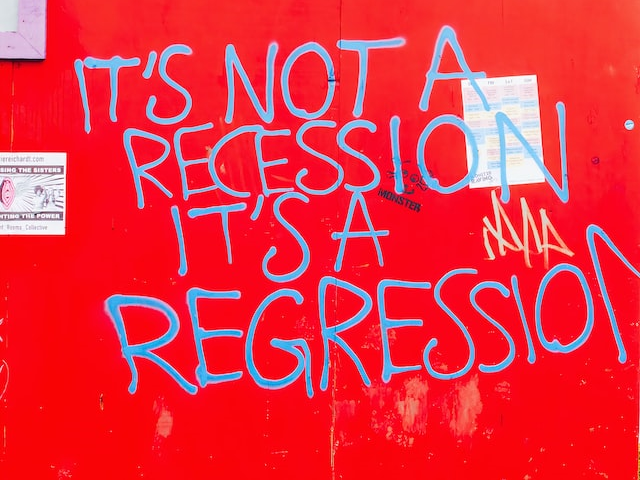A lot has happened during the last six weeks.
Rising interest rates. The second and third-largest bank failures in U.S. history. Technology industry layoffs.
Before all this happened, six weeks ago, a recession forecasting model developed by a U.S. Federal Reserve analyst predicted the probability of recession in the U.S. would soon rise above 50%. That prediction has since come to pass, as the 50% probability line was breached on Valentine's Day 2022.
Through Friday, 17 March 2022, the same model indicates the probability the National Bureau of Economic Research will someday determine a recession began sometime between March 2023 and March 2024 has risen to nearly 57%.
The latest update to the Recession Probability Track shows how that probability has evolved since our previous update at the end of January 2023.
The chart shows the current probability of a recession being officially determined to have begun between 17 March 2023 and 17 March 2024 is 56.9%. Assuming the Fed follows through on hiking the Federal Funds Rate by another 0.25% tomorrow, the probability of an "official" recession will continue rising. Doing some back-of-the-envelope math using our recession odds reckoning tool, with the 10-Year and 3-Month Treasuries as inverted as they are today, the odds of recession should rise to nearly 62% by the end of the Fed's next meeting on 1 May 2023.
Analyst's Notes
The particular recession forecast model we're tracking is really trying to predict what range of months will contain the month the NBER's analysts will one day say the U.S. business cycle hit its peak of expansion following 2020's Coronavirus Pandemic Recession before turning south. That is not the same as forecasting when recessionary conditions affecting the economy began. Those already have. The model attempts to forecast the period in which the NBER's criteria for what they consider qualifies as a national recession will have been met.
For the latest updates of the U.S. Recession Probability Track, follow this link!
Previously on Political Calculations
We started this new recession watch series on 18 October 2022, coinciding with the inversion of the 10-Year and 3-Month constant maturity U.S. Treasuries. Here are all the posts-to-date on that topic in reverse chronological order, including this one....
- U.S. Recession Probability Shoots Over 50% on Way to 60%
- Recession Probability Nearing 50%
- Recession Probability Ratchets Up to Better Than 1-in-6
- U.S. Recession Odds Rise Above 1-in-10
- The Return of the Recession Probability Track
Image credit: Photo by Annie Spratt on Unsplash.
Labels: recession forecast
Welcome to the blogosphere's toolchest! Here, unlike other blogs dedicated to analyzing current events, we create easy-to-use, simple tools to do the math related to them so you can get in on the action too! If you would like to learn more about these tools, or if you would like to contribute ideas to develop for this blog, please e-mail us at:
ironman at politicalcalculations
Thanks in advance!
Closing values for previous trading day.
This site is primarily powered by:
CSS Validation
RSS Site Feed
JavaScript
The tools on this site are built using JavaScript. If you would like to learn more, one of the best free resources on the web is available at W3Schools.com.

